Text
Self-awareness in the disaster situation of Barangay San Isidro, Valley 2, Parañaque City
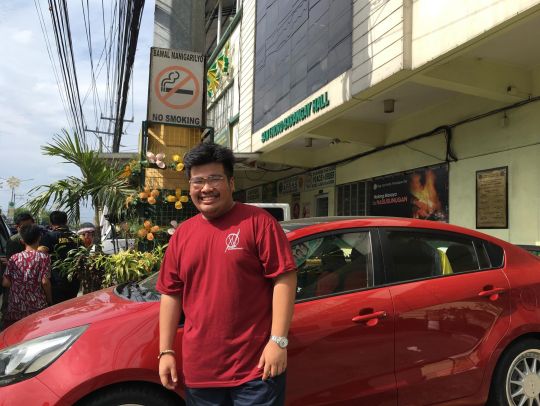
On December 26, 2019, I had a visit on our Barangay City Hall, which is located on San Isidro, Sucat, Parañaque City (Hence, Barangay San Isidro). The Barangay Hall will be confusing to many, especially to newcomers like me, since there are many doors which lead to different organizations and departments of the Barangay.
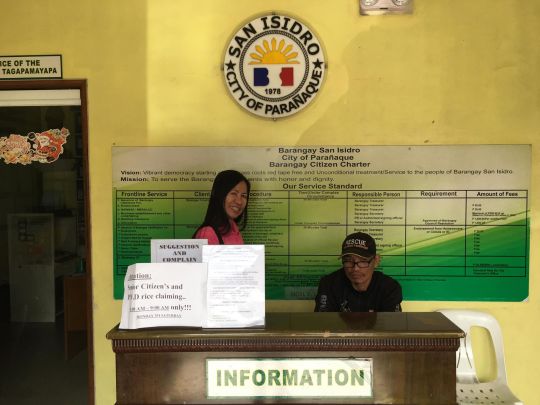
On my visit there with my mom, I was greeted by two people from the information desk and was asked what my initiative was of being there, to which I asked of who I can interview inside the Barangay pertaining to BDRRM. They then pointed the door to the left which led to another room, in which I met Mr. Raul Grafil, a Barangay Executive Officer.
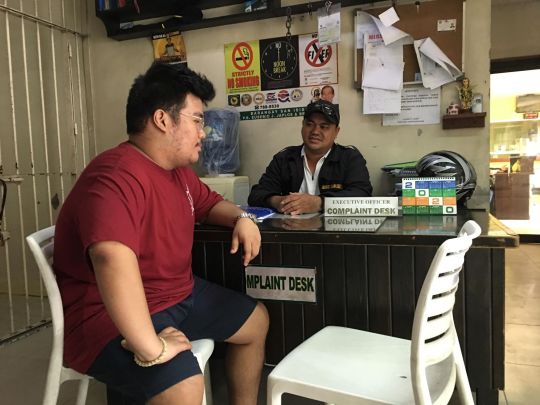
I asked him if I can interview him for my NSTP, specifically about BDRRM I said, to which he obliged. I showed him first the list of questions and soon after, we got the interview going. When asked about the hazard identification questions, he remembered when Bagyong Ondoy striked us (on 2009), then there was the rally and violent confrontation between the police and the people of Silverio (the place beside the Barangay Hall), and Parañaque being under the state of calamity because of the rising number of dengue cases. For typhoons, it randomly appears and God-made, so it is usually frequent, but not as great as of Ondoy. Then for the rally and the rising dengue cases, it seldomly happens, since those were man made, and the dengue cases were the result of our own negligence, specifically, by not throwing our trashes in proper places, accumulated unclean water in some places, etc.
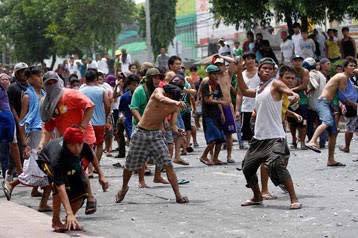
Silverio Demolition
Credits to: ABS-CBN News
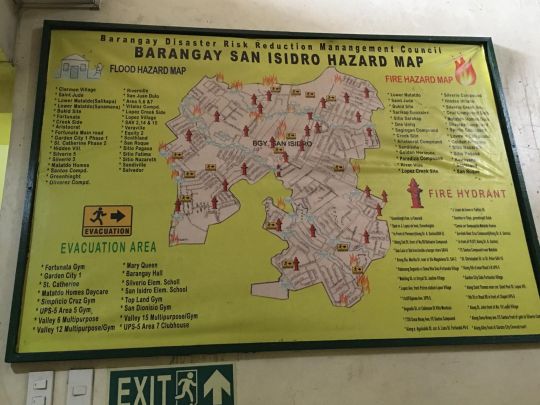
For the vulnerability and risk assessment, he (Mr. Grafil) brought me to the hazard map of Barangay San Isidro. The map showed everything I needed to know about where to go and not to go in times of need. The map indicated where flood and fire hazards are most probable and evacuation areas, places that are the safest to go to if a typhoon or calamity happens. He told me that those near the flood and fire hazard symbols in the map are the most affected if a typhoon is to happen since they are the ones that need to evacuate early and leave their homes since it not safe anymore, and that they are the most prone to the effects of the calamity to happen. He also added that everytime a calamity happens, it’s very hard since people don’t usually listen to what they’re saying, thinking that it’s not going to have a disastrous effect and “lilipas rin”. He said, “Okay naman paminsan minsan, kasi minsan hindi naman talaga kailangan mag evacuate, para lang sigurado, pero may mga beses talaga na kahit pinipiliit na nating mag evacuate, wala talaga, ayaw.” This was one of the hardest problems they encounter which also gives a harder after effect, since those who did not evacuate are those most needing of help.
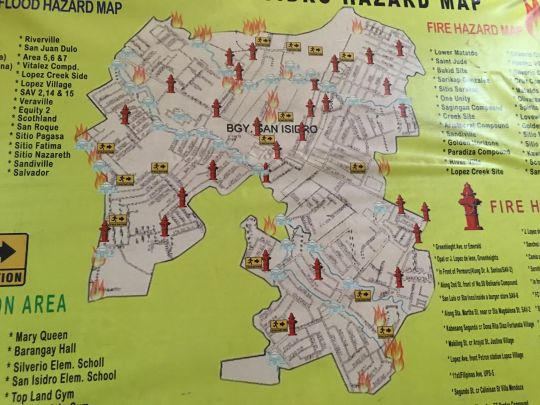

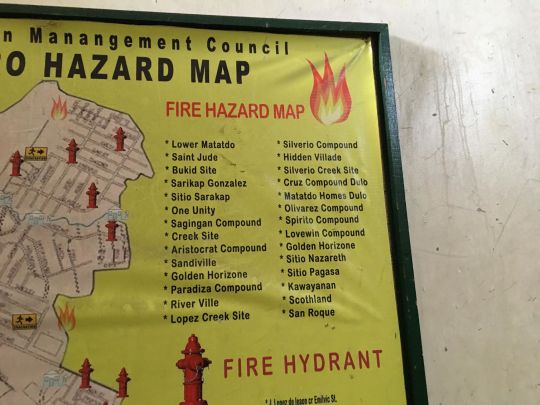

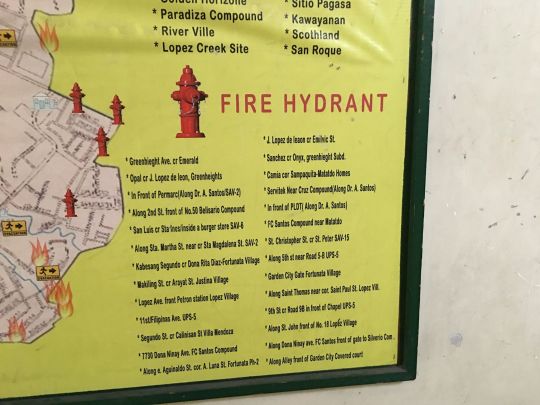
After that, I took some pictures of their emergency equipment stored besides the stairs. They have the necessary equipment needed in cases of emergencies, such as life vests, ropes, hoses, machineries and such.
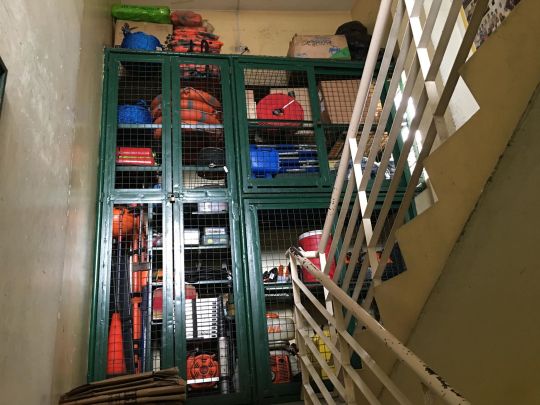
Soon after, he showed me proof that Parañaque is always prepared and preparing for the better by showing the awards the Barangay won (Disaster Resilient Barangay, Best in Solid Waste Management and Cleanest Waterways).

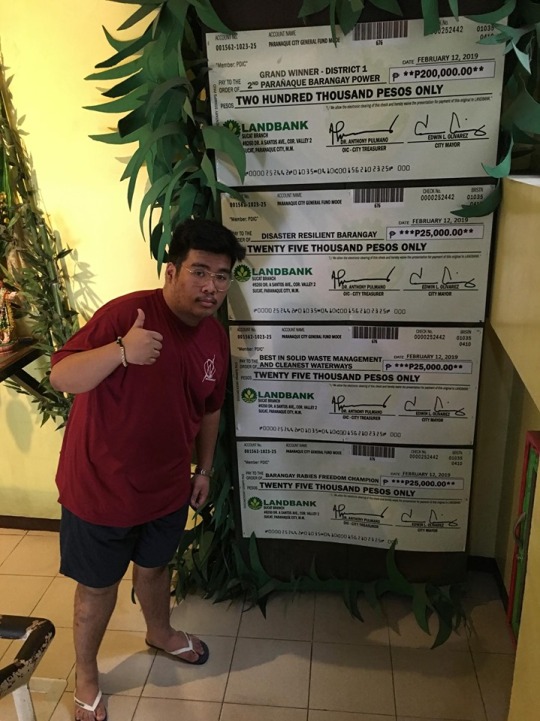
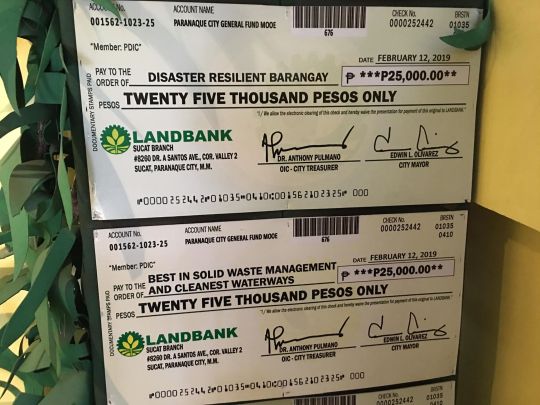
We then got back to the room where we first met, and in there I asked the questions pertaining to the Disaster Management Assessment. He told me that if constant rain is imminent or a typhoon is coming, they usually post announcements, warnings, reminders and important information in their Facebook page (Paranaque City Disaster Risk Reduction and Management Office). He said that the Barangay conducts assessments before, during, and after a typhoon to have the proper preparations made for the people and for future typhoons to come. They also conduct trainings and orientations for people who may help the community in the future in times of hazards and disasters, and immersions for students which include community preparation. It is the City Disaster Risk Reduction and Management Council/Office, with the help of Consumer Welfare Office, and Bureau of Fire Protection, that help the community in facing a calamity or disaster. After that, I thanked him and took a picture with him, before leaving and learning new things on how to help in having a better tomorrow.
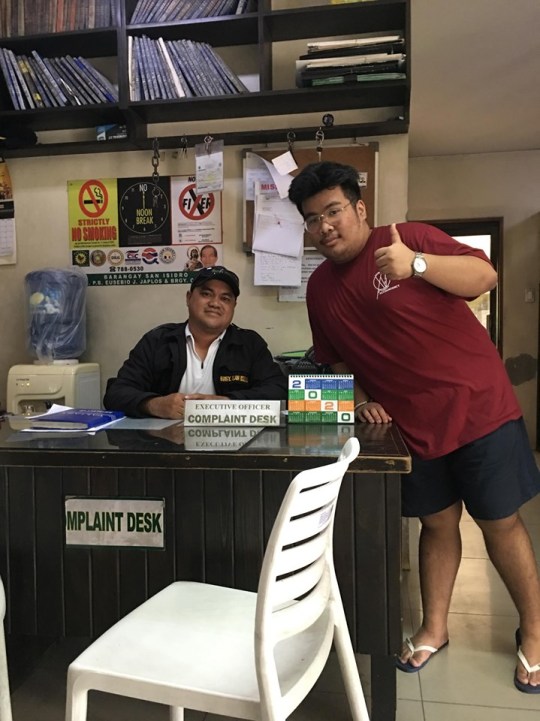
As we took pictures outside for the community walk, I can’t help but notice clogged sewages in front of the Barangay Hall, and as we crossed the street, there was a big dumpster of garbage on the road. This is a very hazardous practice since if those garbages drain our sewages in times of typhoons and heavy rain, the flooding is very much imminent.
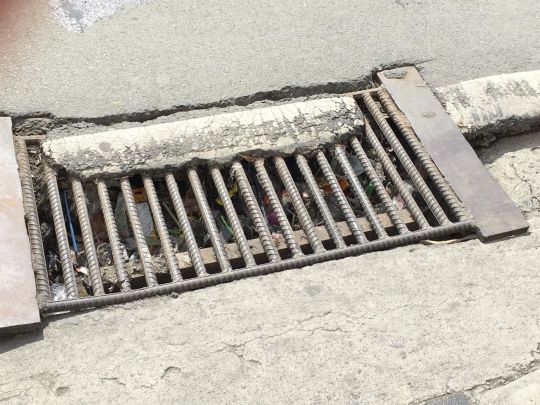

As for safe spaces, the St. Catherine Court (can be seen in the “evacuation area” part of the hazard map) is located in Valley 2, Sucat inside the St. Catherine Subdivision and is open to everyone who needs to evacuate out of their homes. It is very much safe since it is in the higher ground of the subdivision and not prone to flooding.
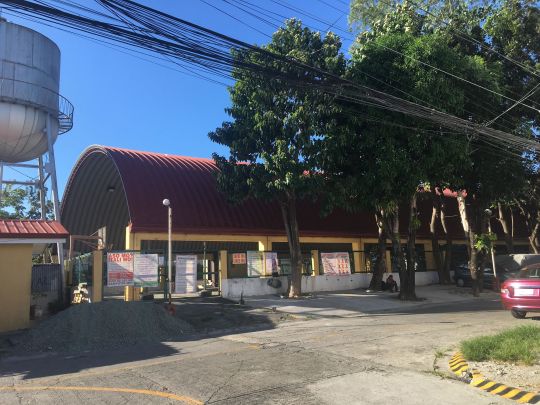
They also practice waste segregation and collection of water bottles, which is the best practice since it prevents clogging of sewages. They are also constructing new sewage systems, an extension of those already constructed near our homes, to further decrease flooding in times of rain. For me, it’s harmful in the short run but beneficial in the long run, since the construction of those sewage systems are left behind and when it rains, it makes it hard for pedestrians to walk in the proper sidewalk and are forced to walk on the road which is dangerous, but when all of it is complete, we will all benefit and be less prone to the effects of flooding.

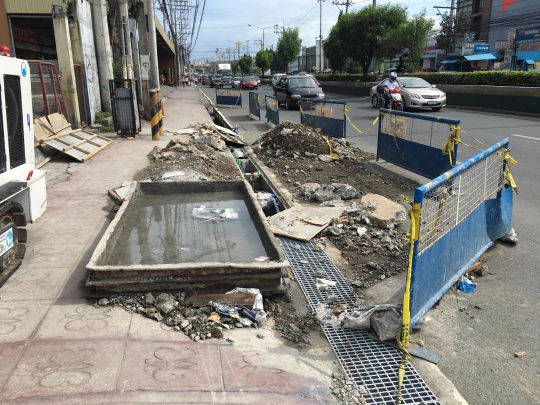
Based on the kwentuhan and community walk, I can describe the community as well prepared, since they have the necessary equipment needed ready in cases of calamities and disasters. They have fire trucks, life rafts, the equipment, and they also have a hazard map. One thing that was not provided to me was a BDRRM plan, which could have been very helpful, since they did not have any more copies. They know in what areas of the Barangay are more prone to fire and flood, which is very much needed in times of calamity so that they know what their area of focus will be. This also shows that the barangay knows the strengths and weaknesses of different places in the community, which is very helpful in times of emergencies. Then, the government agencies and departments of our city and Barangay are helping together to reaching out to our fellow people of San Isidro in how we can all prepare and minimize risks and the disasters that are to come. The community is clean due to the practice of solid waste management, but can be better since garbage are still everywhere (not solely based on them but also because of the lack of discipline of the people). If the Barangay can easily provide anyone with their BDRRM plan, clean the sewages, and create more seminars and programs for its people, then I can say that they really are deserving of the awards they were given. The issues confronting the community are flooding, the rising number of cases of dengue, and garbage everywhere. I think these issues are happening in the community primarily because of clogged sewages and drainages, which is because of garbage everywhere, which is because of the lack of discipline of the members of the community that don’t practice “clean as you go” and simply throw their trash anywhere, and because of this, water is left in different places, which then becomes the source of mosquitos which then causes dengue. For me, all of the problems are interconnected because all of the reasons for it happening are also interconnected. The possible solutions the local government to address these issues are first, implement a better policy in waste management, like banning plastics, making those who are not following the law clean sewers and garbages, and be more vocal in waste management practices by creating seminars, workshops, immersions for students, and posting in social media for better awareness of the people. Relating this to the disaster situation of our country, we ourselves are the ones who are making us unprepared for disaster and even we do become prepared, politics and corruption take place. We cut off trees and replace it with buildings, we throw our trash in improper places, we don’t listen to the authorities when a calamity is to strike, and when a calamity or disaster happens, it is us who cries the loudest for help. Yes, it is in the nature of the Filipinos to help each other in times of need. President Manuel L. Quezon once said, “the Philippines is our country, and the only country God has given us. We must live for it and die for it, if necessary.” Yet, we live for our country and let it die on its own. If only the country realizes that money won’t give us second lives. The country needs to have discipline, politics that actually care for the country and not for the congress’ sake only, and actually helping each other in giving life and preserving life with one another. Only by then can we actually be prepared and rise up from disasters and calamities. My realizations from the kwentuhan and community walk that even the smallest of things can make the biggest difference. By practicing “clean as you go” in everywhere I go, I contribute in helping the community have a proper waste management system, which then lessens clogged sewages, which then results to less or no accumulated water, which then results to no presence of dengue. The community is affected by everything we do, and if only every member of the community can see it, then we will all benefit from it. We need to address the issue of disaster in our country because it disregards the value of human life. Disasters kill innocent people and affects usually the poor and the needy, for they don’t have the necessary items they need to protect themselves from the disasters to come. We need to address it because it is a problem that we cannot control, but we can reduce its harmful effects to the people and lessen the number of casualties. By addressing disasters, we preserve the value of human life, as all humans should do. We can address it first and foremost, by planning. We can address it by knowing what the problems are, what are our weaknesses, our strengths, what can and cannot be fixed, all the variables present, and how can we solve it. Second, by helping each other. One cannot do it alone, but together, together we are strong. And lastly, by throwing our pride aside and caring for our country and its’ future. As a member of the community and this nation, the possible solutions I can do to address the vulnerabilities by being vocal of how I can help and how others can also help. Since we are in the age of technology, I can make publishing materials in social media which aims to show awareness in our community in terms of disaster, waste management, and how we can all help create a better community. Also, people today are visual learners, so them seeing videos and images, even memes, whose goal is to show awareness will create much more awareness to everyone. Actions that I should take to increase the capacities of my community and country, as a student, is listening and being active in my NSTP class and volunteering in Red Cross. For me, I cannot help others if I am still powerless. Therefore, if I listen to my NSTP professor, read the modules, opening my eyes in the bigger picture, then I become prepared in teaching to others what was taught to me. By volunteering again in Red Cross (I volunteered in High School), I then have the necessary skills to help others and at the same time, hone my skills so that when the time comes, I can help others so that may also help those who are in need. In this way, we create a system in the community that cares for itself and creates a better future for our children, our childrens’ children, until the world is no more.
1 note
·
View note